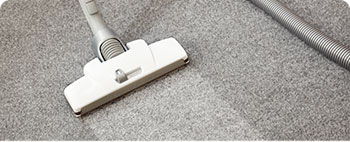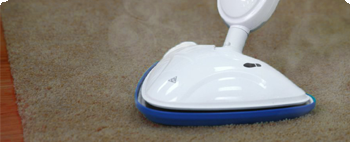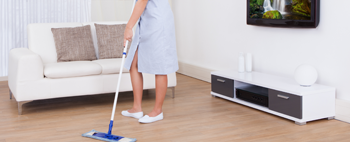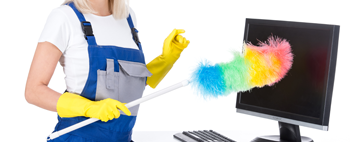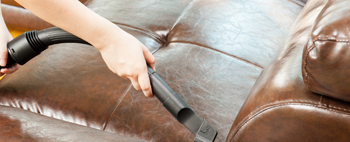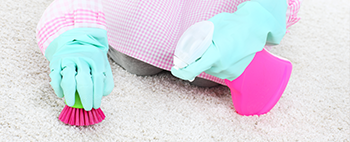Discovering the Secret to a Sustainable House Cleaning Routine
Posted on 12/06/2025
Discovering the Secret to a Sustainable House Cleaning Routine
Maintaining a spotless home is essential for health and peace of mind, but the real challenge lies in crafting a sustainable house cleaning routine. With growing awareness of environmental issues and the desire for efficiency, more households are seeking eco-friendly, effective, and practical cleaning strategies. If you want to unlock the secret to a sustainable routine that keeps your home sparkling without compromising the planet or your well-being, you've come to the right place.

Why Choose a Sustainable House Cleaning Routine?
Before diving into how to create an eco-conscious cleaning regimen, it's important to understand why sustainability matters in home care. Traditional cleaning products often contain harsh chemicals that can harm not only your health but also the environment. Typical cleaning practices can lead to excessive water use, plastic waste, and indoor air pollution.
- Healthier living environment: Reduces exposure to toxic chemicals and allergens.
- Eco-friendly impact: Decreases pollution and conserves resources.
- Long-term savings: Lowers costs by using natural and reusable products.
Transitioning to a sustainable cleaning routine isn't only a responsible choice--it's a rewarding one that benefits everyone in your home and the planet beyond.
Core Elements of a Sustainable Cleaning Routine
To achieve a truly sustainable house cleaning routine, you must rethink the products you use, the methods you follow, and the frequency of your cleaning cycles. Let's break down these essential pillars:
1. Choose Eco-Friendly Cleaning Products
One hallmark of a sustainable house cleaning solution is the use of natural ingredients that are safe for both your family and the environment. Many commercial cleaners are loaded with synthetic fragrances, preservatives, and chemicals. Switching to natural alternatives can substantially decrease your ecological footprint.
- Vinegar: Effective for glass, mirrors, and even disinfecting surfaces.
- Baking soda: Naturally scrubs away stains and neutralizes odors.
- Lemon juice: Cuts through grease and leaves a fresh scent.
- Castile soap: Plant-based and versatile for multiple cleaning tasks.
- Essential oils: Add fragrance and offer antimicrobial benefits.
*Tip: Prepare your own cleaning sprays by mixing vinegar and water in a reusable bottle. Add a few drops of your favorite essential oil for enhanced scent and cleaning power.*
2. Use Reusable Tools and Reduce Waste
Single-use sponges, paper towels, and disposable dusters may be convenient, but they generate excessive waste. To make your house cleaning routine sustainable, invest in reusable and durable cleaning tools.
- Microfiber cloths: Highly effective for trapping dust and grime. They require less detergent and water and can be washed repeatedly.
- Reusable mop heads: Opt for versions that you can wash and reuse.
- Natural scrub brushes: Replace plastic versions with bamboo or wooden brushes.
- Old towels or t-shirts: Repurpose textiles as cleaning rags.
By choosing sustainable tools, you minimize landfill waste and save money on single-use items.
3. Adopt Water and Energy-Saving Habits
A truly sustainable home cleaning regimen minimizes the consumption of water and energy resources. While cleaning, be mindful of your habits:
- Turn off the tap: Don't let water run unnecessarily while scrubbing or wiping.
- Efficient laundering: Wait for full loads before washing cleaning cloths or mop heads, and opt for cold water cycles.
- Air dry tools: Skip the dryer and let washed items dry in the sun, which also naturally disinfects.
- Use low-energy appliances: Select energy-efficient vacuums and dishwashers if possible.
4. Plan a Realistic and Sustainable Schedule
Consistency is the heart of any sustainable cleaning routine. Instead of occasional deep cleans that require harsh chemicals and exhaustive effort, adopt regular, light maintenance that prevents dirt and dust from building up.
- Daily: Quick tidying up, dishwashing, wiping down counters.
- Weekly: Dusting, mopping, cleaning bathrooms, changing linens.
- Monthly: Washing windows, cleaning appliances, organizing closets.
- Seasonal: Decluttering, deep-cleaning carpets, maintaining HVAC systems.
*Distribute tasks among family members to make maintaining a sustainable house cleaning rhythm a team activity, building shared responsibility.*
Innovative Tips for an Eco-Friendly Cleaning Routine
Ready to make your sustainable cleaning routine even more efficient and enjoyable? Incorporate these innovative strategies:
Embrace Minimalism to Reduce Cleaning Demands
Fewer items mean less dust, clutter, and surfaces to clean. Adopt minimalist principles--keep only what you need and love, and donate or recycle the rest. You'll find cleaning faster, easier, and more sustainable as a result.
Introduce Green Plants Indoors
Not only do houseplants add natural beauty, but certain varieties such as spider plants, pothos, and snake plants purify the air. Cleaner air means less airborne dust and toxins, complementing your sustainable cleaning routine.
Opt for Concentrated and Bulk Products
When purchasing cleaning agents, select concentrated formulas that last longer and require less packaging, or purchase in bulk to minimize waste. Many eco-friendly brands offer refill stations or packaging made from recycled materials.
Homemade Cleaning Solutions: Simple Recipes
- All-Purpose Cleaner: Mix 1 cup white vinegar, 1 cup water, 10 drops of tea tree oil in a spray bottle. Use on most surfaces, avoiding natural stone.
- Natural Glass Cleaner: Blend 1/4 cup rubbing alcohol, 1/4 cup white vinegar, 1 tablespoon cornstarch, and 2 cups warm water for streak-free shine.
- Lemon Scrub: Sprinkle baking soda on a lemon half, then use to scrub sinks, tubs, or cutting boards. Rinse well.
By creating your own cleaning solutions, you take control over what enters your home environment, reduce packaging waste, and save money.
Overcoming Obstacles to a Sustainable Cleaning Routine
Switching to a sustainable house cleaning regimen may present some initial challenges. Here's how to tackle the most common obstacles:
- Convenience bias: It's tempting to rely on disposable wipes or all-in-one sprays, but small changes--like keeping reusable cloths handy--make eco-friendly alternatives more accessible.
- Perceived effectiveness: Many worry that natural cleaners aren't as powerful. However, vinegar, baking soda, and lemon can handle most cleaning jobs without harsh chemicals.
- Time constraints: Break tasks into daily micro-cleaning to make your routine more manageable and prevent buildup.
- Budget concerns: While some green products seem pricier, DIY solutions and reusable tools offer long-term savings.
Long-Term Benefits of Sustainable Cleaning
Committing to a sustainable house cleaning routine yields benefits that extend beyond cleanliness:
- Preserved indoor air quality: Fewer chemicals in your air reduce respiratory issues and allergies.
- Safer surfaces: Non-toxic products ensure that counters, floors, and toys are safe for children and pets.
- Lasting home value: Gentle, natural cleaning methods extend the lifespan of surfaces and furnishings.
- Positive environmental impact: Lower water and energy use, reduced plastic waste, and safer waste water benefit local ecosystems.
- Increased well-being: Engaging in mindful cleaning can relieve stress and foster a greater sense of control and satisfaction.
Frequently Asked Questions About Sustainable House Cleaning Routines
Can a sustainable cleaning routine be as effective as traditional methods?
Absolutely. Many natural products such as baking soda and vinegar clean as thoroughly as their chemical-heavy counterparts. Consistent maintenance is the true key to effectiveness.
Is sustainable cleaning more expensive?
While some eco-friendly products carry a higher upfront cost, homemade solutions and reusable tools drive down expenses over time, making sustainable cleaning a cost-effective choice.
How can I motivate my family to join in?
Keep tasks simple, assign age-appropriate jobs, and explain the benefits of a sustainable routine. Make cleaning into a game or play upbeat music to build positivity around the activity.
What if I have pets or children?
That's all the more reason for a sustainable cleaning system. Non-toxic products are safer for all household members and minimize accidental ingestion or skin contact risks.

Get Started: Simple Action Plan to Achieve a Sustainable Cleaning Routine
- Audit your supplies: Identify and replace chemical-laden products and single-use tools.
- Stock up on essentials: Acquire vinegar, baking soda, castile soap, and microfiber cloths.
- Plan your schedule: Assign light cleaning tasks daily, deeper ones weekly, and rotate seasonal tasks.
- Involve everyone: Share responsibilities and celebrate successes together.
- Reflect and adjust: Track what works and where you can improve for greater sustainability.
Conclusion: The Reward of a Sustainable House Cleaning Routine
The secret to a sustainable house cleaning routine lies not in overwhelming change but in thoughtful, consistent choices. By embracing natural products, reusable tools, efficient habits, and inclusive scheduling, a clean, green, and tranquil home is well within your reach.
Start small--swap one chemical cleaner for a natural alternative, or replace paper towels with microfiber cloths. As each step becomes habit, you'll discover that sustainability is not just an aspiration but a joyful, achievable reality.
Transform your home--and your impact on the world--one eco-friendly cleaning habit at a time.








